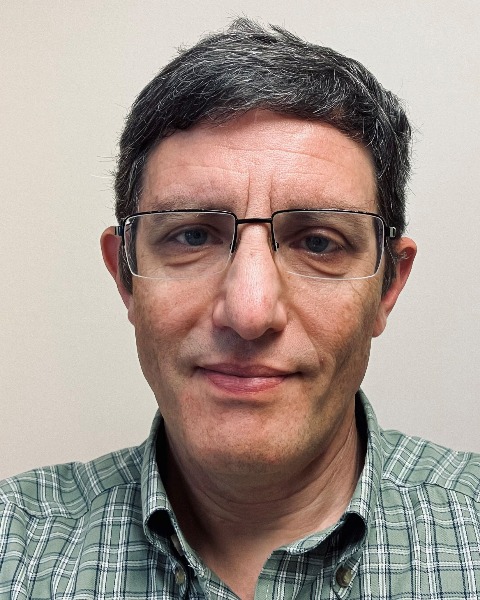Interdisciplinary
Advances in Interdisciplinary Science: Brain Control of Mobility in Aging and Disease Populations
-
RH
Roee Holtzer, PhD
Professor
Psychology and Neurology
Yeshiva University and Albert Einstein College of Medicine
Bronx, New York, United States -
TL
Teresa Liu-Ambrose, PhD, PT (she/her/hers)
Professor
Physical Therapy
University of British Columbia
University of British Columbia, British Columbia, Canada -
RH
Roee Holtzer, PhD
Professor
Psychology and Neurology
Yeshiva University and Albert Einstein College of Medicine
Bronx, New York, United States -

Mark Wagshul, PhD (he/him/his)
Associate Professor
Radiology
Albert Einstein College of Medicine
Bronx, New York, United States -

Chun-Liang Hsu, PhD (he/him/his)
Assistant Professor
Rehabilitation Sciences
The Hong Kong Polytechnic University
Hong Kong, Hong Kong -

Paul Laurienti, MD,PhD
Professor
Radiology
Wake Forest University School of Medicine
Winston-Salem, North Carolina, United States
Chair(s)
Discussant(s)
Individual Symposium Abstract First Author(s)
Interdisciplinary research has demonstrated that cognitive and mobility performance and decline are inter-related and potentially coupled implicating the brain as a key common denominator shared by both domains of function. Novel studies in the current symposium utilize advanced neuroimaging methods to elucidate how structural and functional measures of brain integrity are utilized to predict mobility outcomes and mitigate against risk of developing mobility decline and impairments. Mark Wagshul demonstrates that whole brain latent patterns have differential associations with gait speed in older adults with and without multiple sclerosis. Paul Laurienti uses brain networks connectivity data to define cognitive reserve demonstrating that associations between amyloid beta and mobility decline are attenuated among older adults with high cognitive reserve. Chun Liang Hsu uses functional neural networks to define a novel construct - physical reserve. He demonstrates that among older adults with subcortical ischemic vascular cognitive impairment (SIVCI), high physical reserve attenuates the negative effect of white matter hyperintensities on postural stability. Roee Holtzer uses functional-near-infrared-spectroscopy (fNIRS) to assess oxygenated hemoglobin (HbO) in the prefrontal cortex during walking under single and dual-task conditions. He shows that higher fNIRS-derived HbO during dual-task walking is protective against future falls in older adults with relapsing-remitting but not progressive MS subtype. Combined, these studies shed light on novel discoveries concerning brain control of mobility in aging and disease populations. Furthermore, emphasis is placed on demonstrating how brain data are utilized to define constructs (cognitive and physical reserve) and elucidate theoretical models (compensatory reallocation) vis-à-vis mobility outcomes.
Brain Interest Group Sponsored Symposium
Learning Objectives:
- 1. After attending this session, participants will be able to demonstrate knowledge regarding the prevalence of mobility decline and impairments as well as individual and public health consequences of mobility decline and impairments in older adults with and without neurological disease.
- 2. After attending this session, participants will be able to demonstrate knowledge regarding the role of structural and functional measures of brain integrity in predicting or mitigating the risk of developing mobility impairment in older adults with and without neurological disease.
Presentations:
-
10:00 AM - 11:30 AM PSTUsing Functional Brain Imaging Data to Predict Falls in Older Adults With Multiple Sclerosis
Individual Symposium Abstract First Author: Roee Holtzer, PhD – Yeshiva University and Albert Einstein College of Medicine
-
10:00 AM - 11:30 AM PSTSelective Grey Matter Patterns of Mobility in Older Adults With and Without Multiple Sclerosis
Individual Symposium Abstract First Author: Mark E. Wagshul, PhD (he/him/his) – Albert Einstein College of Medicine
-
10:00 AM - 11:30 AM PSTAssociations Between Functional Networks of Physical Reserve, Postural Instability, and White Matter Lesions
Individual Symposium Abstract First Author: Chun-Liang Hsu, PhD (he/him/his) – The Hong Kong Polytechnic University
-
10:00 AM - 11:30 AM PSTBrain Networks and Functional Reserve in the Presence of Amyloid Pathology
Individual Symposium Abstract First Author: Paul J. Laurienti, MD,PhD – Wake Forest University School of Medicine
